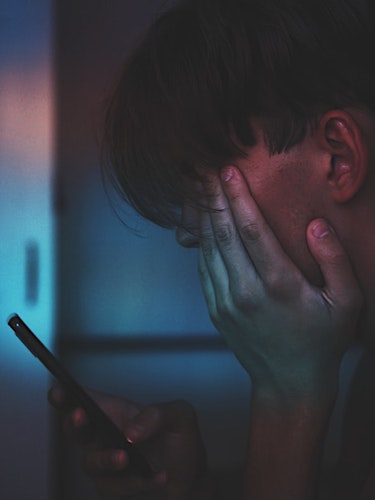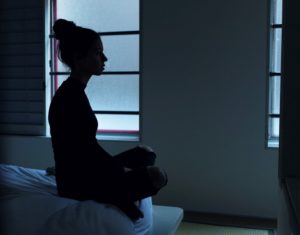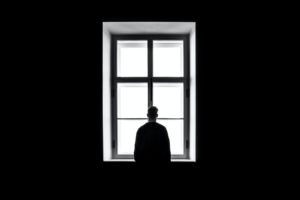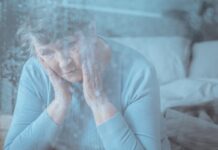
When the skies are gray, the temperatures cold, and darkness comes early, does it make you SAD?
Seasonal affective disorder is a form of depression also known as SAD, seasonal depression or winter depression. In the Diagnostic Manual of Mental Disorders, this disorder is identified as a type of depression – Major Depressive Disorder with Seasonal Pattern.
People with SAD experience mood changes and symptoms similar to depression. The symptoms usually occur during the fall and winter months when there is less sunlight and usually improve with the arrival of spring. The most difficult months for people with SAD in the United States tend to be January and February. While it is much less common, some people experience SAD in the summer.
 SAD is more than just “winter blues.” The symptoms can be distressing and overwhelming and can interfere with daily functioning, sapping your energy or making you feel moody. It can be mild, moderate, or severe. However, it can be treated. About 5 percent of adults in the U.S. experience SAD and it typically lasts about 40 percent of the year. It is more common among women than men.
SAD is more than just “winter blues.” The symptoms can be distressing and overwhelming and can interfere with daily functioning, sapping your energy or making you feel moody. It can be mild, moderate, or severe. However, it can be treated. About 5 percent of adults in the U.S. experience SAD and it typically lasts about 40 percent of the year. It is more common among women than men.
SAD has been linked to a biochemical imbalance in the brain prompted by shorter daylight hours and less sunlight in winter. As seasons change, people experience a shift in their biological internal clock or circadian rhythm that can cause them to be out of step with their daily schedule. A drop in serotonin, a brain chemical that affects mood, might play a role in SAD. Reduced sunlight can cause a drop in serotonin that may trigger depression. The change in season can also disrupt the balance of the body’s level of melatonin, which plays a role in sleep patterns and mood
While I’ve experienced the “winter blues” in the past, it seems to have had much more of an impact on me this year. Admittedly, since the pandemic began, I’ve been laying low. I have many friends who have lost family or struggled with the after effects of COVID 19 for months. I hate wearing a mask so my time “out and about” has been extremely limited since around March. I don’t live in fear, the limitations I’ve imposed on myself have been my choice. But those restrictions, coupled with the short daylight hours, gray skies, and cold temperatures, caught up with me in late December.
I suppose it was inevitable. I am an outdoorsy girl. My “happy place” is on my patio surrounded by my flower gardens. I also love to write, preferably in that very setting, which is soothing and inspires me. I knew I had issues when it took me several days to write my Green Thumb Gardening column instead of the usual couple of hours.
I turned to a friend and psychotherapist for some answers that might help me, you, and anyone else feeling down right now.  Dr. Steven Davidson has over thirty years experience in inpatient and outpatient mental health and addiction treatment settings as well as training and supervising other therapists. He has a Masters Degree in Social Work, a Masters Degree in Business Administration with a specialization in healthcare management, and a Doctorate of Philosophy Degree in Clinical Sexology. Additionally, Steven went to high school with my sister and he has known my family for many years. I trust him and know that he is one of the best in his field.
Dr. Steven Davidson has over thirty years experience in inpatient and outpatient mental health and addiction treatment settings as well as training and supervising other therapists. He has a Masters Degree in Social Work, a Masters Degree in Business Administration with a specialization in healthcare management, and a Doctorate of Philosophy Degree in Clinical Sexology. Additionally, Steven went to high school with my sister and he has known my family for many years. I trust him and know that he is one of the best in his field.
According to Dr. Davidson, here are some of the symptoms you might experience with SAD:
- lethargy
- appetite loss
- sleep disorder
- difficulty concentrating
- lack of interest
- irritable or moody
- increased anxiety
“We do need exposure to sun which raises serotonin, the key hormone that stabilizes our mood, feelings of well-being, and happiness. This hormone impacts your entire body. It enables brain cells and other nervous system cells to communicate with each other. Serotonin also helps with sleeping, eating, and digestion.”
Dr. Davidson added that the pandemic and subsequent social distancing also contributes to challenges with SAD and other types of depression.
“Social distancing causes isolation and we miss  the human touch. If you are married or have children, it may be less of a struggle. If you live alone, the feeling of isolation can be overwhelming. The pandemic makes it even more challenging. Wearing a mask also impacts my line of work. I depend on facial expressions when counseling patients. Teletherapy has helped me and my patients to better communicate.”
the human touch. If you are married or have children, it may be less of a struggle. If you live alone, the feeling of isolation can be overwhelming. The pandemic makes it even more challenging. Wearing a mask also impacts my line of work. I depend on facial expressions when counseling patients. Teletherapy has helped me and my patients to better communicate.”
Doctors are human beings first and even they are not immune to SAD.
“I always loved to venture to Ft. Lauderdale, Florida to escape the “winter blues.” I would come every year because it got me through a shorter supply of sunlight during the winter. It got me over the hump.”
Eventually, Dr. Davidson moved his practice from Nashville to Ft. Lauderdale. “That way I can be outside any time of the year.”
If sunshine is in short supply where you live, treatment for SAD may include light therapy (phototherapy), medications and psychotherapy. Vitamin D is known as the “sunshine vitamin” because your body can make it by using cholesterol and absorbing natural sunshine. Your mood may improve with as little as 10 minutes of sun exposure. This is why light therapy is an important treatment for SAD.
It’s normal to have some days when you feel down. But if you feel down for days at a time and you can’t get motivated to do activities you normally enjoy, see your doctor. This is especially important if your sleep patterns and appetite have changed, you turn to alcohol for comfort or relaxation, or you feel hopeless or think about suicide.
You can also make lifestyle changes that can help your symptoms.
- Let as much natural light as possible into your home or office. Open blinds, sit close to windows, and keep your environments as bright as possible.
- Get outside when you can. Even if it’s cold or cloudy, the light can still benefit you.
- Keep physically active. Exercise and activity boost endorphins and relieve stress. Both of these can keep you feeling better.
One of the pieces of advice that Dr. Davidson offered during our conversation was “to identify what you enjoy.”
That really resonated with me. I love gardening and while the weather isn’t really conducive to that at the moment, my gardening catalogs have come in which makes it easier to focus on warmer, spring weather and the coming planting season. I love music, especially jazz. I am making a concerted effort to have music playing often, even if it’s in the background. I love to write. On the days when it happens to be sunny, I am going to sit on my patio even if I have to bundle up. Sunshine is good for my soul.
 Two final thoughts from Dr. Davidson that might help beat the blues:
Two final thoughts from Dr. Davidson that might help beat the blues:
“Pet adoptions are way up right now for a reason.”
Even if you can’t afford to adopt a pet, find ways to help a local animal shelter. It will be good for the dog or cat and for you.
“It is the individual experience that is most relevant. We are the best source of information about our own bodies. We live in them. We know when something is not right.”
Don’t brush off that yearly feeling as simply a case of the “winter blues” or a seasonal funk that you have to tough out on your own. Take steps to keep your mood and motivation steady throughout the year.
Dr. Davidson also reminds us that “this past year is NOT the new normal, think about the social events you will plan when the pandemic is behind us.”
In the meantime, find what makes you happy!







